|
Monday, July 4, 2011
Progress Notes
A few weeks ago the Autogram featured the well known Dr. Paul Howard of Tuscumbia in one of its articles. I had always respected “Dr. Paul” and, in fact, it was he and his father in law, Dr. Marshall Humphreys, who inspired me to seek a career in the medical profession. You can read more about that in the biography of me written by the Jefferson City News Tribune article found in the link at the top of this page. So I thought it very appropriate to present the article this week on our website, especially for those readers who may not live in the area nor subscribe to the Autogram:
Miller County Autogram Sentinel
May 19, 2011
Recently, Dr. Paul Howard of Tuscumbia received a lifetime membership award from the Missouri Association of Osteopathic Physicians and Surgeons at the state meeting. When asked about the award, Dr. Howard downplayed the achievement musing, “If you are around long enough, that is what you get” (photo 01).
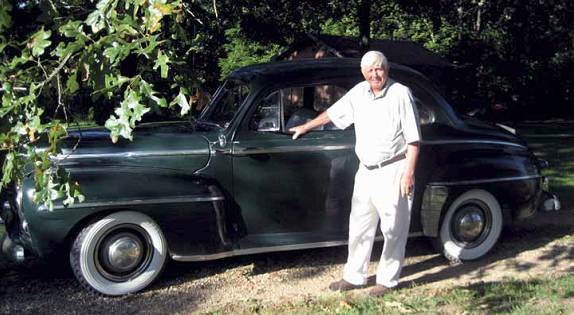
01 Paul Howard
One of Dr. Paul Howard’s interests is old cars and occasionally taking drives in them
around the countryside with his wife Marjorie.
(Photo provided by family)
Many residents of Miller County and surrounding counties would probably beg to differ about the significance of the award. It does not just represent length of service, but more importantly, a lifetime of commitment to provide medical care for patients, many who were friends and neighbors, in a rural community… his community.
Dr. Howard practiced medicine in this area for more than four decades. Besides a private practice in several different locations in Miller County, Dr. Paul was a surgeon on staff at Still Hospital (currently Capital Region Medical Center) in Jefferson City. When asked what part of medicine he most enjoyed, his response was delivering babies. There are scores, if not hundreds of Dr. Paul’s “babes” around the county, along with many of their mothers. He estimates that he delivered over 2,000 babies in a clinic setting and another 1,000 babies at Still Hospital.
Dr. Howard’s connection with Miller County, specifically
Tuscumbia, started long before he became a physician. It actually began with his father, Ernest Howard. Ernest had attended two years at the high school in Bagnell, Missouri. He finished his last two years of high school in Tuscumbia. Ernest was a boarder with the Madison Bear family in their home in the “Goosebottom” area originally built by Phil Hauenstein (photos 02 and 03).
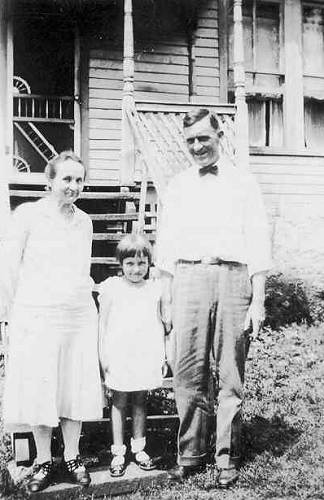
02 Sadie, Susie and Madison Bear
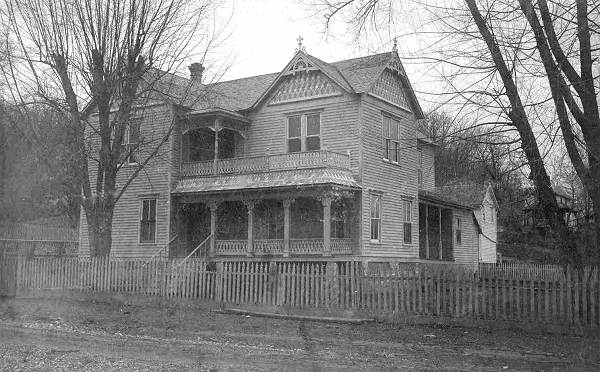
03 Phil Hauenstein Bear house in Goosebottom
While in high school, Ernest met Connie Buster. After high school, they married. Eventually, the young couple ended up in Kansas City where there were jobs to be found.
Son Paul attended school in Kansas City until his senior year. At that time, he was considering a career in veterinary medicine. His father remembered what an incredible voc-ag program he had been a part of at Tuscumbia High School. Mr. T.C. Wright, the voc-ag instructor was still there (photo 04).
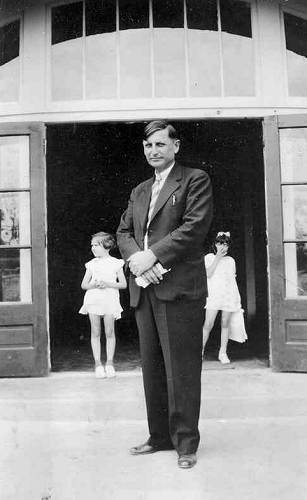
04 Tennyson Clay Wright
So, in 1947, Paul came to Tuscumbia.
He arrived with no real place to stay. The Bears were no longer able to take on boarders. Paul lived for a few days in the Brockman Hotel, which he said was located halfway down the Old Baptist Church Hill (photo 05).
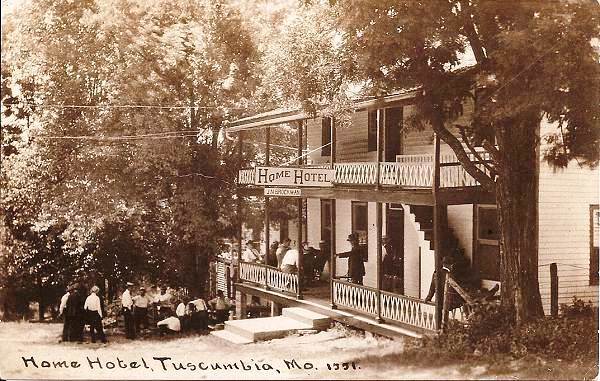
05 Brockman Home Hotel
It was a large house that also was a hotel for traveling salesmen and others needing to do business at the county seat.
During the first week of school, teacher T.C. Wright announced in class that they had a new student, and he needed somewhere to stay. The boys in the class were asked to relay the information to their families. Frank and Eva Wright opened up their home to the “new student”. Their son, Winston, became one of Paul’s best friends (photos 06, 07 and 08).
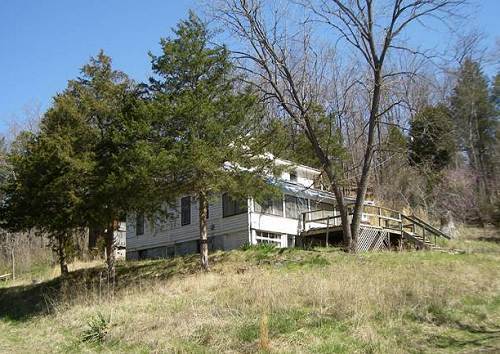
06 Frank Wright Home
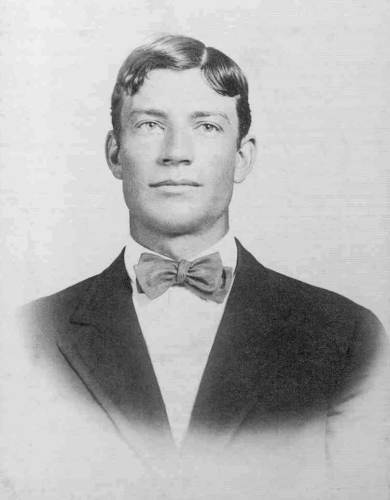
07 Frank Wright
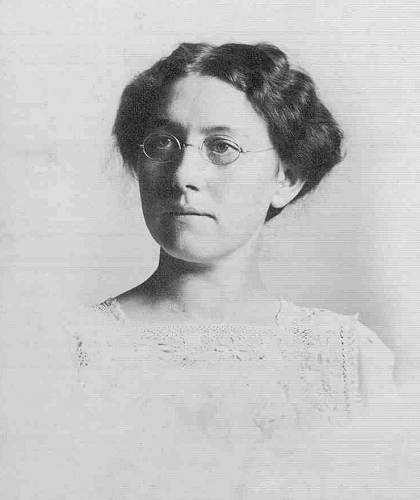
08 Eva Bassman Wright
Howard’s senior year was a most memorable one. He had not had voc-ag in Kansas City, so he was in a class with the younger students at Tuscumbia. “We went on many field trips. Mr. T.C., as the voc-ag instructor, did many things on the farm that a veterinarian today would be called to do. Many fond memories involved T.C. Wright.
“Once, the panel bus used by the class got stuck in a mud hole. We students did not push when we were supposed to, but pulled on the bus instead, which kept the bus in the mud, and got the boys covered in mud.”
A farmer, the late Grant Edwards, was asked to use his tractor to get the little bus out of the mud. Edwards suggested that the boys could just lift the bus and carry it out (photo 09).
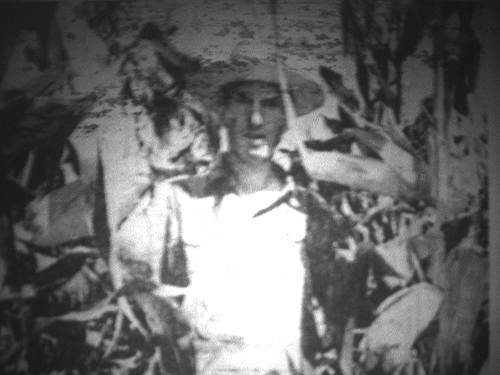
09 Grant Edwards
“Anyway, we were a muddy mess and already late for English class. Mr. T.C. decided we needed to go to Dog
Creek to wash the mud off, and that’s what we did. We probably learned more in one hour on the farm, than we would have back at school from the books. We loved T.C.”
According to Dr. Paul, Wright was also responsible for helping him get jobs in and around Tuscumbia. His first job was actually his voc-ag project. He helped Wright with his sheep operation. The farm was located just across Highway 52 where Dr. and Mrs. Howard now live.
“It was a wonderful experience.”
His second job involved testing milk. With this job, he earned money to go to college. While in high school, Paul met Marjorie Humphreys. Eventually they started dating. In the meantime, the Korean War was being fought and Paul signed up for the Air Force. He was told that he didn’t pass the physical, so he paid his tuition and bought his books for college. Imagine his surprise when he received a call from a sergeant reminding him that he was to go to San Antonio and start training. There had been some sort of mix up. He had passed his physical, but the sergeant, learning the young man was ready to head off to college, told him to do just that.
So, Howard went off to junior college in Kansas City and then attended Central Missouri State University. He taught at Vernon School in Miller County for a year and a half before he was drafted into the U. S. Marine Corps. During his time in the Marines, he married his high school sweetheart, Marjorie. Incidentally, Winston Wright was his best man (photo 10).
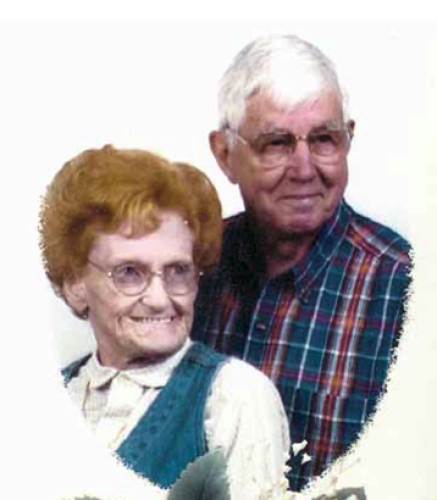
10 Dr. Paul and Marjorie Howard
After serving in the Marines, Paul went to the Kirksville College of Osteopathy to become a doctor.
“I honestly didn’t know what a D.O. (Doctor of Osteopathy) was when I came to Tuscumbia from Kansas City.”
Today, Osteopathic physicians and Medical Doctors work side by side in both private practice and in the hospital setting. This was not the case in the 1960s and 1970s. Very rarely did the two different types of physicians mix.
After graduating from the Kirksville College of Osteopathy, Dr. Paul completed an internship in Clinton Missouri and then five years later did a residency in surgery at Tucson General Hospital. And after that, he returned to Miller County to raise his family and practice medicine for the next 40 years. (During his career, he also practiced medicine in Wilcox, Az., for two years and in Ava for a couple of years.)
Dr. Paul said several doctors in Tuscumbia had an influence on his career. The first was his father-in-law, Dr. Marshall Humphreys (photo 11).
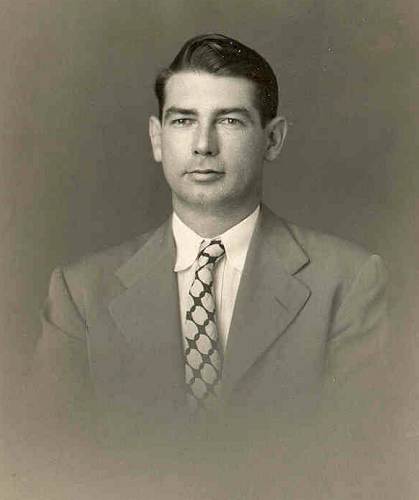
11 Dr. Marshall Humphreys
Dr. Humphreys arrived in Tuscumbia in 1937 to open his practice. This was the same year that Dr. Gould arrived in Iberia. Dr. Marshall had no car and most of his possessions were in a cardboard box.
“Those were hard times, and he had worked himself through school.”
The community welcomed the new doctor. He delivered about 150 babies a year. Dr. Humphreys originally practiced on the second floor of the old Tuscumbia Bank building, which still stands in the part of Tuscumbia “under the hill” (photo 12).
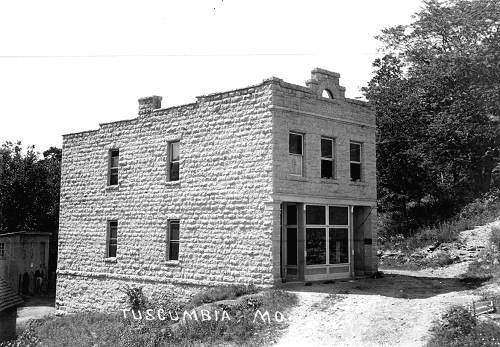
12 Bank of Tuscumbia
He and his wife Margaret built a house next to the Tuscumbia School, and Doc Humphreys practiced in part of the house before acquiring another house next door to their home in 1948, and turning it into Humphreys Hospital (photos 13 and 14).
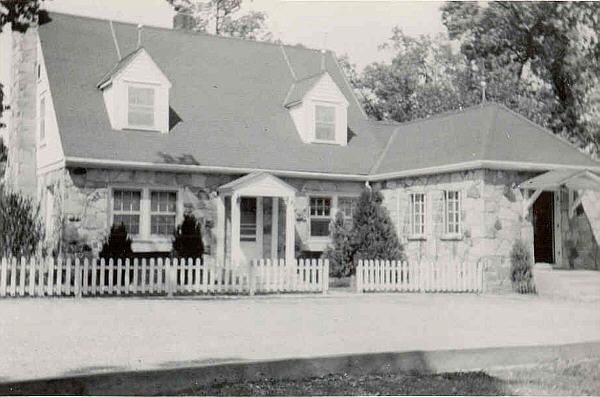
13 House on Hill - 1939
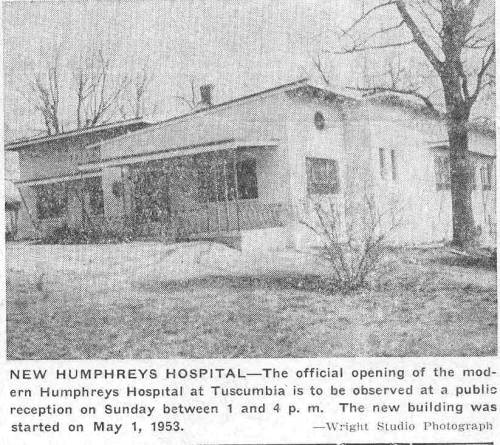
14 Humphrey Hospital Opening
Click image for larger view
In 1951, Dr. Marshall’s brother, Dr. Stanley Humphreys joined the practice. Dr. Robert Murrell, who had an office in Eldon, also was on staff at the hospital, usually administering anesthesia.
After Dr. Howard completed his internship, he joined the staff from 1960-1965.
Dr. Howard recalls that as the “new doctor” he was not as popular as his father in- law. “He (Dr. Humphreys) loved to hunt. Certain sales representatives knew that and they would be sure to bring their gun when their trip would include Tuscumbia and sometimes “Doc Marshall” would take off leaving the patients in my care. Many would decide to come back the next day rather than see the ‘new doctor.’ Eventually, I was accepted.”
Humphreys Hospital closed in the late 1960s. Dr. Stanley Humphreys suffered a heart attack and died in 1967. Dr. Marshall Humphreys was killed in a car accident in 1972. A clinic remained in Tuscumbia. When Dr. Howard completed his residency in surgery in Tucson, Az., he returned to Tuscumbia and opened up a practice at the clinic with Dr. Fred Schekorra. Dr. Schekorra eventually became an anesthesiologist and has since retired.
Dr. Paul and Marjorie have four daughters: Rebecca, Connie, Stephanie and Molly. They also have 10 grandchildren and seven great-grandchildren.
Today, Dr. Paul is semi-retired. He works part-time at a clinic on Highway C that serves the Mennonite community in the area.
“I still really enjoy working. The Mennonite Clinic is much like when I first started out. I don’t do any surgery or deliver babies. I practice family medicine.”
So what does he do with his spare time? His yard work keeps him busy. He and Marge love to play croquet with friends. They also go on frequent car rides around the countryside. Finally, he and Marge love attending Tuscumbia athletic events, especially basketball. Has he ever gotten so into the game that he has yelled at the referee?
“Yes”, he admits, but he is really trying to have better self-control.
After all these years and so many experiences what would be Dr. Howard’s philosophical statement: “Life is good.”
The economy is the subject most often in the news and on people’s minds these days. I found an article in The Vacation News, one of the local Lake papers published August 20, 1976, in which some people were interviewed who had experienced the “Great Depression” of the late twenties and early thirties:
Vacation News
August 20, 1976
The Depression
Linda Merkl and Jean Crowder
During the Depression many families depended on their father’s wages. The following is a description of how people lived during the Depression, and it is told by local residents.
Mr. Jim Prewitt worked on the construction of the dam for about two years. He got paid $40.00 a week; no money was taken out for Social Security. His transportation to work was his horse. His working hours were from 7:00 a.m. to 5:00 p.m., with an hour for lunch. The Prewitt farm had cows, chickens, pigs, and horses. They sold eggs for 5 cents a dozen, hogs for three cents a pound, and cream was about 40 cents a pint fruit jar. They sold anywhere from 8 to 10 jars a week. The money left over was spent on seeds and other materials. Mr. Prewitt bought his first car in 1913 for about $735. Mr. Prewitt said that $30 is approximately $200 now.
Mr. Prewitt also said that they would hunt for raccoons, squirrels, and other animals for food and sell the furs to buy goods.
According to Mr. W.S. Frame, who was 30 years old at the time of the Depression, the depression was a great concern but the construction of the Dam kept the economy at a high level (photo 15).
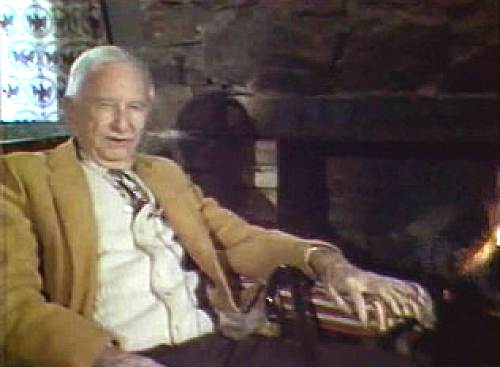
15 Walter Shannon Frame
The price of food was as follows: whole sale hogs sold for 4 cents a pound; cattle or beef sold for 8 cents a pound; and corn sold for 10 cents a bushel.
Mr. Frame’s first car was a second hand 1914 Model T Ford he bought in 1916 for $100. He sold it in 1925 for $50 and bought a Model T Ford Coupe for over $800. Gas was around 15 cents a gallon.
Mr. and Mrs. Frame bought their clothing needed material at Eldon until stores were built in Lake Ozark. One of the first stores built at the Lake was the Atteberry store (photo 16).
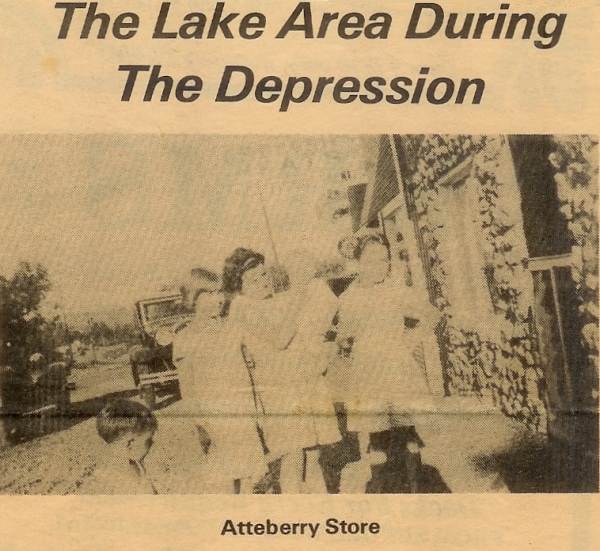
16 Atteberry Store
Mr. Frame worked on the Dam as an engineer for $50 a week for the Union Electric Company. He was the office engineer in the reservoir department. He worked under the Reservoir Superintendent. Ole Davidson, and Assistant Reservoir Superintendent Henry Peoples. They surveyed the land to be submerged. In general, the Engineers were paid $35 to $50 per week. Common labor was about 25 cents to 50 cents an hour and most of the common workers lived in the Bagnell Dam Company Village.
Not long ago I called the County Assessor’s office regarding a question of ownership of a couple of properties in Tuscumbia located on the hillside below the courthouse. Sometimes it is difficult to localize the boundaries in this area with the county’s computer aerial photography system. I have seen the Tuscumbia plat map many times and it all looks so neat and well organized, having numbered lots and blocks as you can see in this old plat map of Tuscumbia (photo 17).
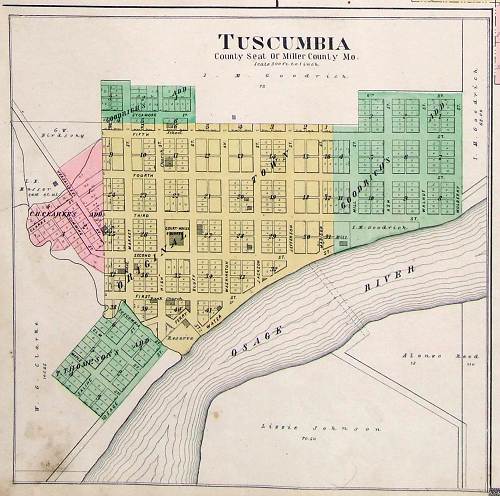
17 Tuscumbia Plat Map
Click image for larger view
The original plotting of these lots was by a man named Marquis Calmes in 1837. According to Goodspeed’s history of Miller County on p. 541:
“…Marquis Calmes surveyed the county seat, leaving one and a half acres for a square and sixty foot streets around it, lots were offered for sale to secure a courthouse fund on October 9, 1837.”
However, no matter how neat the plat map by Calmes appears in the original form as shown in the photo above, very few of the lots were sold originally except for those on the hill top and near the courthouse where Calmes’ original square was placed and where the courthouse later was constructed. Until the steamboats no longer were used as a means commerce most of the town’s activities were below the hill along the river. You can find the court house square on the plat map in the yellow colored area titled “Original Town.”
One lot that was used early on, in addition to the one for the courthouse, was lot No. 12 in Block No. 10 where the first county jail was constructed (photo 18).
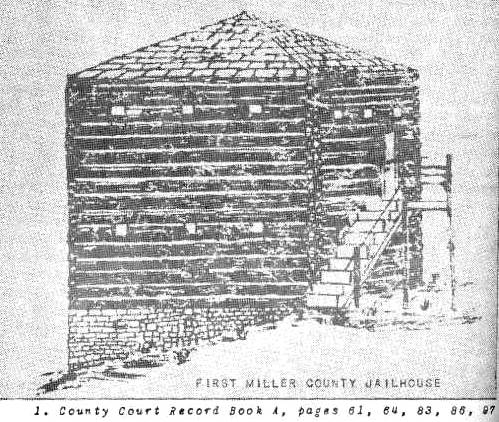
18 First Miller County Jail
The construction of the first jail was extremely well explained in several reports to the county court by Hardin M. Williams, the builder. Attorney Walter S. Stillwell wrote a detailed history of the construction of the first county Jail in an article for the Autogram in 1929 (he was part owner of the paper with Lawrence Wright). This article is presented here as an attachment only to highlight the exacting detail the builder, Hardin M. Williams, supplied to the court for a really small building made of logs! You can scan it briefly just to get an idea of how carefully thought out and constructed was this otherwise relatively unremarkable structure (except of course realizing its historical importance) (photo 19):
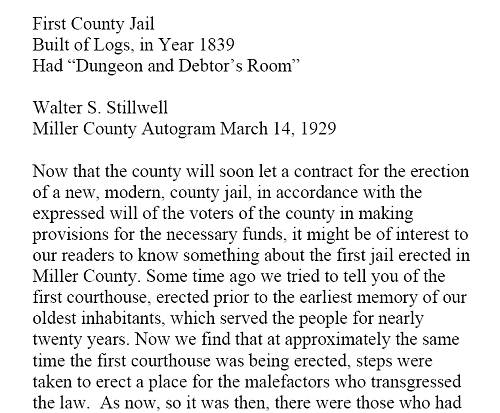
19 First County Jail
Click image to read entire document in PDF format
The second Miller County Jail was built in the court house square according to Goodspeed p. 541:
“In 1865 the present stone jail in the courtyard was ordered and built, and in 1879 one cell of this was leased to the town as a calaboose.”
Here is a photo of the old brick courthouse built in 1857 which shows a portion of the second jail behind it constructed of stone built in 1865 (photo 20):
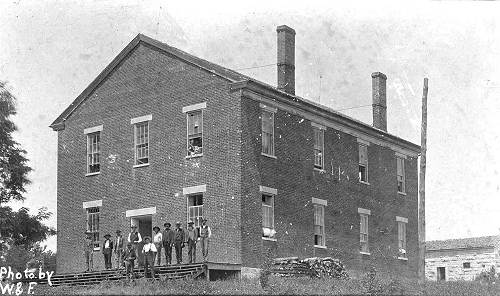
20 Old Courthouse with Second Jail Behind
Click image for larger view
The third jail was constructed in 1929 at the same location as the second jail (photo 21).
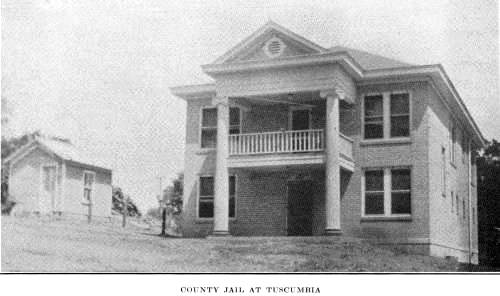
21 Third Miller County Jail
The present and fourth county jail was constructed as part of the new courthouse complex on Highway 52 north of the town square several years ago. In the next photo you can see a portion of the jail at the right rear of the new courthouse (photo 22):
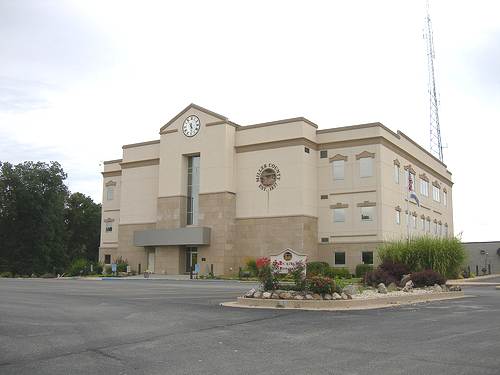
22 New Courthouse - Jail Right Rear
This coming Saturday, July 9, the Miller County Historical Society presents its annual ice cream social at the Miller County Museum in Tuscumbia, 11:00 a.m. to 2:00 p.m. The Joe Jeffries bluegrass group will be present to entertain. This annual event is a fundraising effort for the museum for which a five dollar charge is assessed for those attending.
That’s all for this week.
 Joe Pryor
Previous article links are in a dropdown menu at the top of all of the pages.
|

